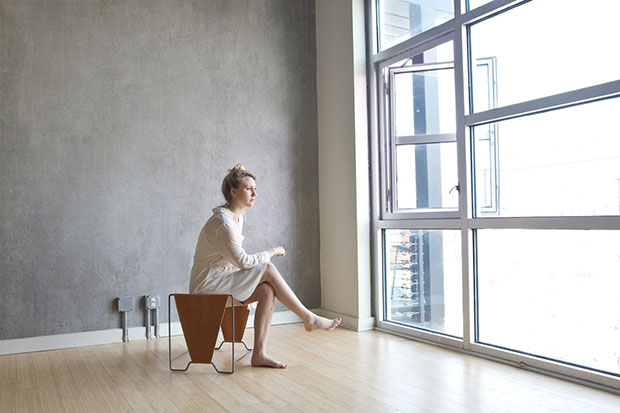
Jerri Hobdy’s design implements recyclable materials for a healthier piece of furniture.
Latest News
June 9, 2015
Back in March, the Cradle to Cradle (C2C) Products Innovation Institute challenged designers everywhere to contribute to the world of sustainable product design. The institute partnered with Autodesk for its first Cradle to Cradle Product Design Challenge. The winners were announced this spring and are certainly bringing in a new era of sustainable design. Entries were submitted from a variety of sectors, including home and furniture, apparel, electronics and automotive.
The contest selected winners from three different categories: professional, student and Autodesk Fusion user.
Have A Seat
Jerri Hobdy, a furniture designer, created the PUREIIFIHIDE, a chair and stool collection. The product used recyclable materials like solvent-free, vegetable tanned leather and steel. Hobdy’s design is inspired by the growing market for non-toxic furniture and her goal to provide future customers the healthiest, best-designed product on the market. This objective is what drives Hobdy to use reusable materials and incorporate sustainable design into product creation.
“I am interested in sustainable design because I am interested in healthy design ... for the planet but even more so for people. In the U.S. especially we are on the edge of a huge and continuing paradigm shift in how we view access to health and healthy choices in a vast range of purchase decisions. The furniture industry is a very chemical ridden, under-regulated puzzle. It will take people that have vision and passion to see the long term and immediate benefits of cleaning up furniture manufacturing. I am one of those people. I am encouraged by [the fact that] C2C and Autodesk are willing to partner with individual designers from around the world like myself to make positive changes. Sustainability is important because it effects the big guys and the small,” Hobdy says.
With her winnings, Jerri will finish prototyping her chair and stool before submitting it for official C2C certification — then she’ll start offering the first commercially available C2C certified residential home furnishings across the U.S.
Sustainability in the Bag
For consumers everywhere, student winner Tjitte de Wolff from the University of Twente, designed the Venlo Bag. Made from 99% recycled materials, the bag is suited to address pollution caused by plastic bag use. de Wolff was inspired to make this design after viewing the documentary called “Plastic Planet,” and learning more about the Great Pacific Garbage Patch.
“The demand for cheap, single-use shopping bags will still exist,” says de Wolff. “Therefore a Cradle to Cradle solution for plastic bags not only eliminates pollution, but also contributes to a healthy ecosystem following the credo: do more good, rather than less bad.”
de Wolff plans to use his winnings for his studies and for creating prototypes of the Venlo Bag.
Watching Water Usage
Cole Smith, the Autodesk Fusion 360 winner, submitted his concept for the Finite Faucet. This product is geared toward public restroom users by helping them learn how to properly wash their hands in addition to reminding them of their environmental impact.
While Smith originally thought that a waterfall design might be ideal for educating users on environmental impact. However, he soon discovered that current waterfall faucets on the market weren’t successful in doing so — but a more visual design with graduated cylinders and measuring cups did.
This led Smith to modify the Finite Faucet to include a clear upper cylinder to act as a visual monitor for water usage. Once it empties, it must be turned off to refill.
Aside from using sustainable design to create a more effective faucet, Smith also sees it as something that can bring innovation and smart business practices into product design.
“From the fun side of things, sustainable design often involves some really neat and innovative material use, in order to recycle materials in new ways,” says Smith. “On a more serious note, It’s easy to see sustainable design as just another part of the green movement, but it’s also a really intelligent business decision. The savings in energy, cost, and labor of intelligently recycling products can be immense compared to designing from stock material.”
For more information, visit the Cradle 2 Cradle Products Innovation Institute.
Subscribe to our FREE magazine, FREE email newsletters or both!
Latest News
About the Author
Jess Lulka is a former associate editor for Digital Engineering. Contact her via [email protected].
Follow DE








